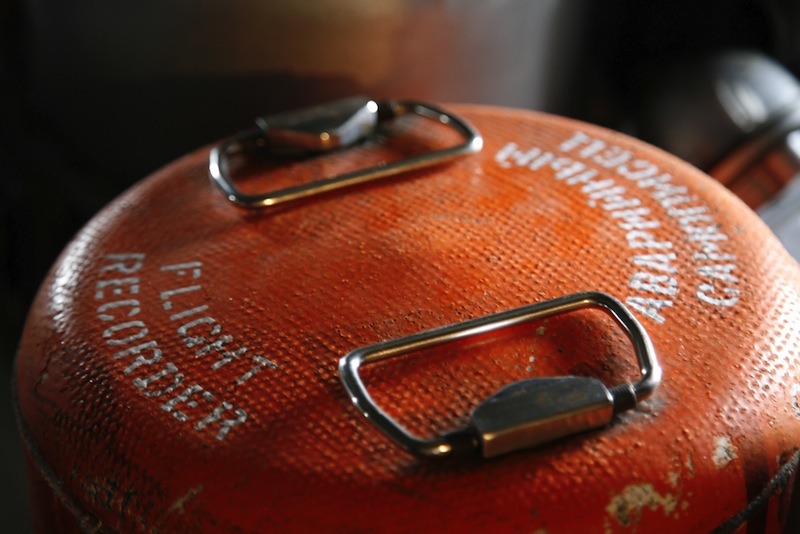Missing Flight 370: How Do Black Boxes Work?

A possible break in the mystery of the missing Malaysia Airlines Flight 370 plane came when ships detected "pings" consistent with the aircraft's black box. But how does a black box actually work?
Black boxes, or flight recorders, are electronic devices that record information on an airplane to be used in the event of a severe incident such as a crash. Usually, an aircraft carries two types of recorders.
The first, a flight data recorder, makes a record of instructions sent to a plane's electronic systems; the second, a cockpit voice recorder, makes a record of conversations, radio communications and other sounds in the cockpit. Sometimes, the recorders are part of the same unit.
Black boxes, which are actually bright orange, are designed to withstand extreme forces and temperatures, and are usually located in the tail of the aircraft, where they are least likely to encounter an impact. [Facts & Timeline About Malaysia Flight 370]
Clues to missing flight
The recorders could offer clues about what happened to Malaysia Airlines Flight 370, which disappeared enroute from Kuala Lumpur to Beijing on March 8, with 239 people on board. Investigators have been searching for the plane in the southern Indian Ocean west of Australia, where satellite data suggests the aircraft may have crashed.
The black boxes emit underwater locator beacon signals, or pings, at depths of up to 20,000 feet (6,000 meters), for up to 30 days before their batteries die.
Sign up for the Live Science daily newsletter now
Get the world’s most fascinating discoveries delivered straight to your inbox.
An Australian navy ship picked up signals with the same frequency as those emitted by the missing plane's black boxes in the northern part of the search area, officials announced Monday (April 7), according to CBS News. The ship Ocean Shield heard the pings from a towed pinger locator. The first series of pings lasted two hours and 20 minutes, and a second signal lasted for 13 minutes.
A Chinese ship also reported hearing pings consistent with a plane's recorder signals on Friday and Saturday (April 4 and 5), according to Xinhua, China's official news agency. This ship heard pings about 345 miles (555 kilometers) away from those detected by the Australian ship.
Awaiting confirmation
But investigators have yet to confirm the pings came from the missing aircraft. Sea life (such as whales) and shipping noise can trigger false alerts. Last week, a British Royal Navy ship called the H.M.S. Echo detected signals that sounded like those from a black box, Australian officials reported, but the signals were false, according to The New York Times.
The Australian and Chinese ships will attempt to detect the pings again. If they do, they will probably deploy underwater robots to search for plane wreckage on the seafloor, a mission that could take many days, investigators said. The black box pinger has a range of only a few miles. And the black box itself is small and doesn't float, so it could be tough to locate.
Finding the flight recorders and the plane's wreckage would provide confirmation that the flight crashed, but the recordings themselves may not be able to resolve the causes of the crash.
The flight voice recorder only stores the most recent two hours of flight, but the key events in the Malaysia Airlines flight may have taken place earlier, officials have said. The flight data recorder would be much more useful, however, because it may allow investigators to reconstruct the flight path, a former pilot told BBC News.
Follow Tanya Lewis on Twitter and Google+. Follow us @livescience, Facebook & Google+. Original article on Live Science.










